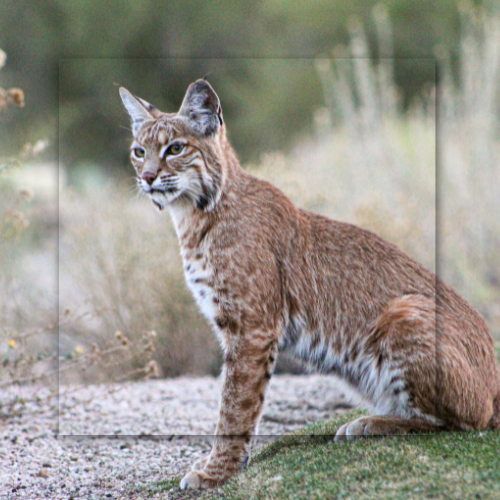
Bobcat Removal And Control
When it comes to animals that are more of a nuisance than a pleasant sight, bobcats are definitely high on the list. These elusive critters may look fascinating from afar, but the trouble they bring when they're close to human habitats is something you can't afford to ignore.
Bobcats In The North Atlanta Area
Atlanta is primarily home to the bobcat species known as Lynx rufus. This animal usually has a tuft of fur on its ears and spots or stripes on its coat. While it might appear charming, its habits are far from it. Being opportunistic predators, they often wander into residential areas in search of food, causing a host of issues for residents.
They prey on smaller animals, including pets like cats and small dogs. While it's uncommon, it's not unheard of for these nuisances to snatch a family pet right from your own yard. Moreover, these creatures are known to rummage through garbage, tearing open trash bags and spreading waste all over the place. This unsightly mess is not just an inconvenience; it also poses hygiene and health concerns for your family.
Here are some little-known facts about these creatures that may intrigue you. Did you know that they are primarily nocturnal? This makes it challenging for homeowners to detect their presence until they've already caused a problem. Moreover, bobcats have an acute sense of hearing and smell, which aids them in avoiding traps and eluding capture. You might think your backyard is secure, but these pests are excellent climbers and swimmers, making it nearly impossible to completely prevent them from entering residential areas.
You'd be surprised to know how much of an impact that bobcats can have. For instance, in areas where these nuisances are prevalent, there can be a significant decline in the population of smaller fauna. The ripple effect of their predatory habits can impact your local ecosystem in ways you might not have considered. With their adaptability to various environments, these animals are extending their reach into more residential areas year after year.
DIY Bobcat Removal
You may think that dealing with this pest is a do-it-yourself (DIY) task. Before you gear up with traps and repellents, consider this: bobcats are agile, intelligent, and potentially dangerous. Mishandling or attempting to trap them could result in injury, not just to the animal but also to you. Therefore, DIY is generally not advisable when it comes to critter control of this sort.
At Grade A Critter, we're committed to helping you find effective, humane solutions to manage and control these pests. Our team of trained professionals uses state-of-the-art equipment and follows approved guidelines to ensure that your home and surroundings are free from these nuisances. We offer comprehensive services that include assessing the extent of the problem, implementing control measures, and providing ongoing support to prevent future infestations.
While bobcats may be a marvel of nature, their presence in residential areas in North Atlanta can be disruptive and even dangerous. They can prey on smaller animals, create messes, and elude poorly implemented DIY measures. Therefore, it's crucial to take this matter seriously and opt for professional services to handle the problem. Contact us today for a free consultation, and let's make your home critter-free.
Frequently Asked Bobcat Questions
Q1: What do bobcats typically eat, and how could that impact my property's ecosystem?
A1: While bobcats are known to consume a variety of prey, they have a particular fondness for small to medium-sized mammals like rabbits, squirrels, and sometimes even deer. When these animals begin to prey on specific fauna in your area, it can upset the natural balance of the ecosystem. For instance, if they overhunt rabbits, it can result in an overgrowth of the vegetation that rabbits typically feed on. The consequences don't just stop at disrupted wildlife; they can also affect your property's landscape and create conditions favorable for other unwanted pests like ticks or rodents.
Q2: I've installed motion-activated lights to deter bobcats. Why aren't they effective?
A2: Motion-activated lights can serve as a deterrent for many nocturnal animals, but bobcats are more adaptable and intelligent than most. These creatures are quick learners, and it may not take long for them to realize that the lights are not a threat. In some cases, they might even use the illumination to their advantage to spot potential prey in your yard. Therefore, while such lights might provide an initial shock factor, they often prove to be ineffective in keeping these nuisances at bay in the long run.
Q3: Can bobcats carry diseases, and if so, what are the risks to my family and pets?
A3: Yes, like many wild animals, bobcats can carry a variety of diseases like “bobcat fever,” and including rabies, which is a significant concern for both humans and pets. They may also carry parasites like ticks and fleas that can transmit other diseases. While the risk of direct transmission from a bobcat to a human is relatively low due to their elusive nature, the danger to household pets is more substantial. A dog or cat exploring the yard could potentially come into contact with droppings, urine, or saliva from a bobcat, thereby exposing themselves to potential pathogens. Therefore, it's crucial to be vigilant and take preventative measures to protect your family and pets.
Grade A Critter
